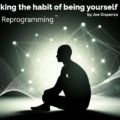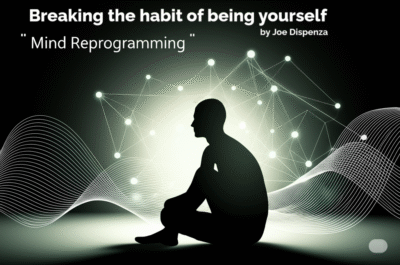Introduction
Imagine unlocking a clearer, deeper understanding of your thoughts, emotions, and motivations—could you transform daily challenges into opportunities for growth? Self-awareness exercises invite you on that journey by guiding you to pause, reflect, and adjust your inner compass. In this article, you will discover what reflective self-awareness truly means, why it matters, and, most importantly, five practical daily practices you can start today to cultivate it. Ready to explore a path of honest introspection and purposeful living?
Table of contents
1. A Broad View of Reflective Self-Awareness
Before diving into specific self-awareness exercises, let’s clarify the landscape:
- Definition and Essence
Reflective self-awareness refers to observing your own mental and emotional states with curiosity and honesty. Unlike fleeting mindfulness, which anchors you in the present moment, this process encourages you to step back, examine patterns over time, and learn from them. - Why It Matters
- Enhanced Emotional Regulation: By recognizing recurring triggers, you reduce impulsive reactions.
- Improved Decision-Making: Insights into your values guide clearer choices.
- Deeper Relationships: Understanding your biases fosters empathy toward others.
- Core Components
- Observation: Noticing thoughts and feelings without judgment.
- Analysis: Asking “Why did I feel/react this way?”
- Adjustment: Planning deliberate changes for future responses.
Together, these elements form the foundation upon which the following self-awareness exercises build.
2. Five Daily Practices to Cultivate Reflective Self-Awareness
Below, explore five actionable routines, each structured from general concept to step-by-step guidance.
2.1. Gentle Journaling Prompts
Start by capturing your inner dialogue in writing, then refine your reflections.
Why it works
Journaling externalizes swirling thoughts, making patterns visible over days.
How to do it
- Set a Time: Choose a consistent slot—morning or evening works best.
- Use Guiding Questions:
- “What emotion did I experience most today?”
- “What belief underlay my reaction?”
- Go Beyond Descriptions: After noting events, ask “Why did I choose that response?”
- Highlight Insights: Circle recurring themes—such as self-criticism or gratitude.
Example Table: Weekly Journaling Overview
| Day | Key Emotion | Underlying Belief | Adjustments for Tomorrow |
|---|---|---|---|
| Monday | Frustration | “I must be perfect” | Accept small mistakes |
| Tuesday | Calm | “I can handle stress” | Practice deep breathing |
| … | … | … | … |
In just five minutes, this self-awareness exercise builds momentum toward deeper insight.
2.2. Mirror Self-Dialogue
Observe your nonverbal cues and engage in a compassionate conversation with yourself.
Why it works
Seeing yourself while you speak reveals tone, posture, and hidden emotions.
How to do it
- Find a Quiet Corner with a mirror at eye level.
- Pose a Question Aloud: “What am I feeling right now?”
- Notice Your Reflection: Watch for frowns, tension, or a softened expression.
- Respond Kindly: Offer the same empathy you’d give a friend.
- Document a Brief Note about what shifted—tone, posture, or clarity.
This visual feedback loop cements awareness of both internal and external signals.
2.3. Perspective-Shifting Pause
Interrupt automatic reactions by mentally stepping into another viewpoint.
Why it works
Shifting perspective interrupts ingrained patterns, opening space for thoughtful choice.
How to do it
- Identify a Trigger: Notice when you feel defensive or stressed.
- Pause Briefly: Take three calm breaths.
- Ask Two Questions:
- “How might someone I respect view this?”
- “What would I advise a friend in this situation?”
- Compare Responses: Note differences between your initial impulse and the alternative.
- Plan One Action: Choose the more constructive path.
By regularly practicing this self-awareness exercise, you cultivate mental flexibility.
2.4. Emotion-Labeling Check-In
Translate vague feelings into precise words to demystify emotional patterns.
Why it works
Putting a name on an emotion reduces its intensity and clarifies its trigger.
How to do it
- Pause at Set Intervals: Schedule three check-ins (e.g., mid-morning, after lunch, late afternoon).
- Scan Your Body: Note tension—neck, shoulders, stomach.
- Select a Specific Label: From a list (e.g., irritated, anxious, hopeful).
- Ask Why: “What happened that stirred this feeling?”
- Acknowledge Without Judgment: “I feel anxious because I’m uncertain about the deadline.”
Over time, you’ll spot patterns—perhaps anxious labels spike before meetings—informing targeted adjustments.
2.5. End-of-Day Reflective Review
Consolidate daily lessons by reviewing successes and areas for growth.
Why it works
Closing the day with reflection transforms experiences into learning opportunities.
How to do it
- Select Three Highlights: Small wins count—finishing a report, pausing for lunch.
- Identify One Challenge: What felt difficult or uncomfortable?
- Ask “What Did I Learn?”: Link challenge to a takeaway (e.g., need clearer priorities).
- Set a Micro-Goal for Tomorrow: “I will schedule short breaks every two hours.”
- Express Gratitude: Note one thing you’re thankful for today.
This final self-awareness exercise cements a habit of continuous refinement.
3. Key Benefits and Impact
At the heart of these self-awareness exercises lie profound transformations:
- Greater Emotional Mastery: You catch rising frustration before it escalates.
- Sharper Self-Insight: Patterns once hidden in the background become clear.
- Resilience Boost: You approach setbacks as data, not verdicts.
- Enhanced Relationships: Awareness of your triggers fosters empathy and patience.
- Purposeful Growth: By tracking your progress, you stay motivated and focused.
Consider this: a recent behavioral study observed participants practicing daily reflection for six weeks. They reported a 30% reduction in stress reactivity and 25% increase in goal clarity. Such data underscores how deliberate introspection reshapes both mind and life.
4. Common Misconceptions and Myths
Many people hesitate to start self-awareness exercises, believing:
- “I Must Be Calm to Reflect”
No—raw emotions often reveal the richest insights. - “I Don’t Have Time”
Five minutes, twice a day, can yield significant gains. - “This Feels Self-Indulgent”
On the contrary, it’s an investment in emotional health that benefits everyone around you.
By dispelling these myths, you pave the way to consistent practice.
5. Integrating Practices into Daily Life
To weave these routines into a busy schedule:
- Pair with Existing Habits: Journaling right after brushing teeth.
- Use Reminders: Phone alarms labeled “Pause & Reflect.”
- Track Progress Visually: A simple habit chart on your desk.
- Find an Accountability Partner: Share insights weekly to reinforce commitment.
Such small adjustments ensure that self-awareness exercises become second nature, not chores.
Conclusion
Embarking on self-awareness exercises is like opening a door to your inner world—one that leads to clearer emotions, wiser decisions, and richer connections. Today, choose one practice and try it: pause, reflect, and let curiosity guide you. As you build these daily habits, you’ll find that growth doesn’t come from perfect execution but from persistent, compassionate inquiry. So ask yourself: what small step will you take right now toward deeper self-reflective awareness?
May your journey be insightful and transformative.
References
- Pennebaker, J. W. (1997). Writing about emotional experiences as a therapeutic process. Journal of Consulting and Clinical Psychology, 65(1), 105–116. https://doi.org/10.1037/0022-006X.65.1.105
- Lieberman, M. D., Eisenberger, N. I., Crockett, M. J., Tom, S. M., Pfeifer, J. H., & Way, B. M. (2007). Putting feelings into words: Affect labeling disrupts amygdala activity in response to emotional stimuli. Psychological Science, 18(5), 421–428. https://doi.org/10.1111/j.1467-9280.2007.01846.x
- Galinsky, A. D., & Moskowitz, G. B. (2000). Perspective-taking: Decreasing stereotype expression, stereotype accessibility, and in-group favoritism. Journal of Personality and Social Psychology, 78(4), 708–724. https://doi.org/10.1037/0022-3514.78.4.708
- Lyubomirsky, S., Sheldon, K. M., & Schkade, D. (2005). Pursuing happiness: The architecture of sustainable change. Review of General Psychology, 9(2), 111–131. https://doi.org/10.1037/1089-2680.9.2.111
- American Psychological Association. (2018, September). How self-talk can improve performance. Monitor on Psychology. https://www.apa.org/monitor/2018/09/self-talk


























